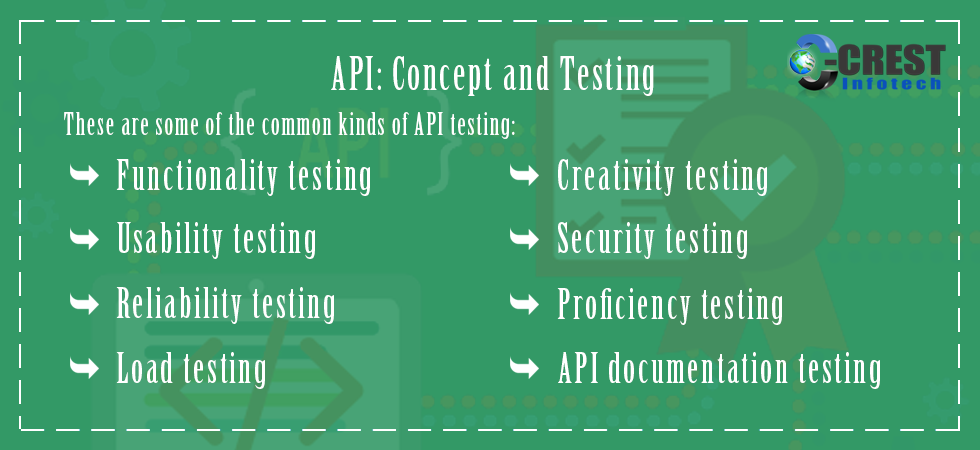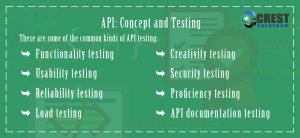API: Concept and Testing – As we know, API testing is a type of testing a software that is performed as a part of integration testing to determine if they meet our expectations for functionality, reliability, performance, and security.
In order to discuss API and Web services testing, we need to first identify what is an API and how it works. An application programming interface, or API, works to connect an application to the web and to other APIs.
API testing is used to determine whether APIs return the correct response for a broad range of feasible requests, react properly to the cases such as failures and unexpected/extreme inputs, deliver responses in an acceptable amount of time etc.
WHY IS API TESTING IMPORTANT?
API testing is one of the most challenging parts of the whole chain of software testing and QA testing because it works to assure that our digital lives run in an increasingly seamless and efficient manner. While developers tend to test only the functionalities they are working on, testers are in charge of testing both individual functionalities and a chain of functionalities, discovering how they work together from end to end.
The first part of API testing involves setting up a testing environment, with the required set of parameters around the API. This involves configuring the database and server for the application’s requirements. Once you’ve set up your API testing environment, make an API call right away to make sure nothing is broken before you go forward to start your more thorough testing.
API-Concept-and-Testing-Banner
COMMON KINDS OF API TESTING
- 1. Functionality testing — the API technically works.
- 2. Usability testing — the API is easy to work with.
- 3. Reliability testing — the API can be consistently connected to and lead to consistent results.
- 4. Load testing — the API can handle a lot of calls.
- 5. Creativity testing — the API can handle being used in different ways.
- 6. Security testing — the API has defined security requirements including authentication, permissions and access controls. See some API security tips for protective vital data.
- 7. Proficiency testing — the API increases what developers are able to do.
- 8. API documentation testing — also called discovery testing, the API documentation easily guides the user.
Of course, automated API testing can be performed in many conditions, particularly when you are pressed for time, making it compelling when you are following continuous software development release cycles.
However, in certain situations, like where APIs are connecting the Internet, it’s nearly impossible to perform only testing automation. Therefore, it’s good to automate if the API calls are giving back the correct responses.
THUMB RULES TO FOLLOW
Now it’s good to have a list of rules of thumb to follow in order to help make the test as successful as possible.
- Test first for the typical or ordinary results, for what happens consistently and what doesn’t.
- Add stress to the system through a series of API load tests.
- Test for failure. Keep the work on and on until you get a Fail output, making sure the API fails consistently and gracefully.
- Group test cases by test category.
- Throw anything you can at the API to test for how it handles unforeseen problems and loads.
- Later on, get creative! For complete test coverage, create test cases for all possible API input combinations.
- Automate whatever you can.
So, API consists of a set of classes/functions/procedures which represent the business logic layer. If API is not tested properly, it may cause problems not only the API application but also in the calling application.
Happy Testing!




